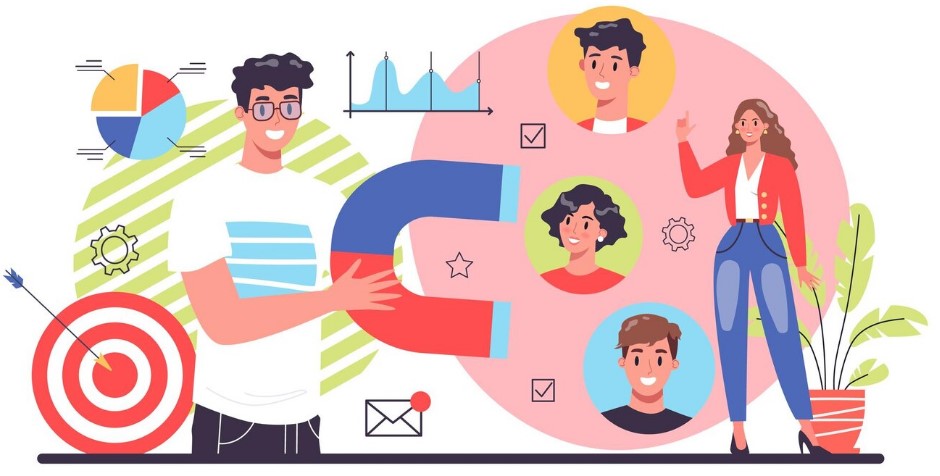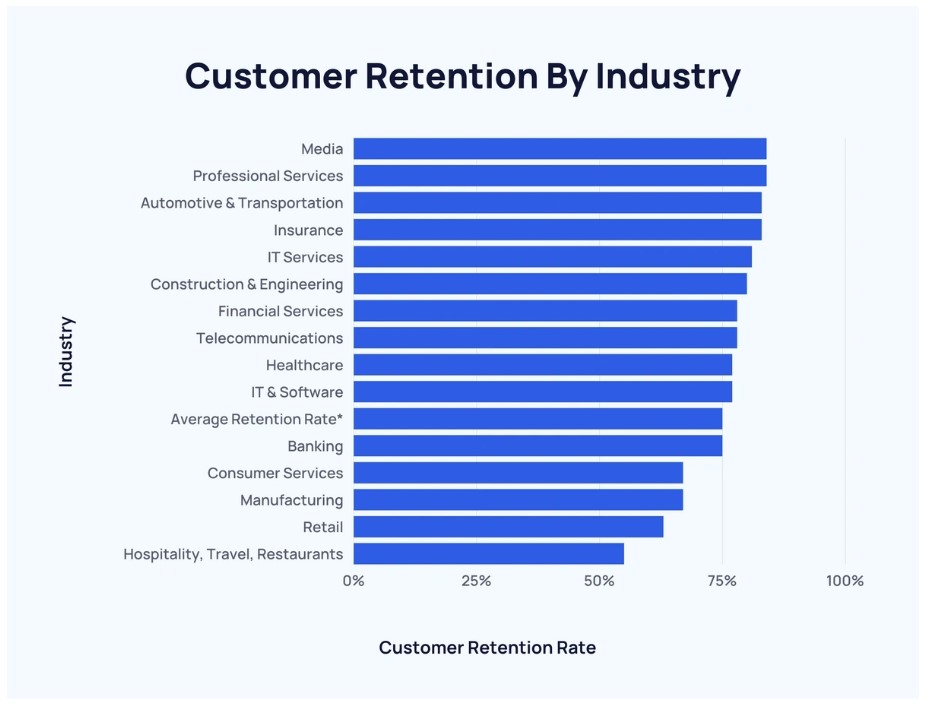Keep Customers Coming Back: 7 Ecommerce Customer Retention Strategies for 2024

Irene Wanja | Apr 17, 2024
Reading Time: 6 minutesCustomer retention is crucial for ecommerce success. With acquisition costs rising, retaining existing customers is more profitable than continually seeking new ones. In 2024, ecommerce store owners should focus on customer loyalty and implement strategies to keep shoppers coming back.
What is Ecommerce Customer Retention?
Ecommerce customer retention refers to the strategies and actions online businesses take to reduce customer churn and keep existing buyers coming back to make repeated purchases over an extended period of time.
In essence, customer retention boils down to fostering loyalty and maintaining ongoing relationships with customers to turn them into repeat shoppers of your products or services. It encompasses the entire customer lifecycle, not just the initial sales process.
The Importance of Customer Retention
In ecommerce, customer retention provides tremendous value and is vital for long-term viability. That’s because:
- Acquiring new customers online can cost 5-25x more than retaining existing ones, according to Harvard Business Review. Drastically cutting these customer acquisition costs improves profit margins.
- According to Forbes, repeat customers spend 67% more compared to new customers due to increased trust and familiarity with the brand. Their lifetime value far outweighs one-time buyers.
- Loyal, returning shoppers are much more likely to purchase at full price compared to first-time shoppers who expect deep discounts or promotions before making a purchase.
- Existing customers tend to convert quicker because previous positive brand interactions have already overcome skeptical barriers. Retained customers require less convincing through the sales funnel.
- Returning customers are more likely to purchase additional products over time as they become familiar with all a brand offers. Their average order value increases with each repeat purchase.
- Loyal customers often refer family and friends, providing highly valuable word-of-mouth marketing at no extra customer acquisition cost.
What is a good customer retention rate for ecommerce?
When evaluating customer retention for online stores, there is no one-size-fits-all rule. The optimal retention rate depends on factors like your business model, industry averages, product mix and more. However, most experts agree that a healthy figure falls between 60-80%, and according to Shopify, they note that it’s generally between 70-80% across all industries.
To calculate your ecommerce customer retention rate:
The number of customers at the end of a given period – Customer acquisitions during the given period / Number of customers at the start of the given period X 100
As a baseline, an increasing retention rate year-over-year typically signals your strategies are working to maintain loyalty. On the flip side, a rate dropping lower than 50% likely indicates more customer churn than is sustainable.
Remember that comparing your rate to businesses in a completely different niche may not provide an apples-to-apples comparison if business models vary drastically.
As such, even a small improvement in customer retention rates quickly translates into significant revenue growth and cost savings for ecommerce store owners.
Why Retention Benchmarks Vary So Much Across Niches
Every ecommerce vertical has unique market conditions and purchase behaviors that dramatically impact benchmarks for a “good” repeat customer rate.
A chart from Exploding topics showcasing customer retention rate by industry.
What accounts for such massive differences? Several structural factors drive these niche distinctions:
- Purchase Frequency – How often customers replenish a given product heavily sways the rates. Wine or razors on subscription get reordered monthly. But jewelry or furniture is purchased very infrequently, once every few years. Frequent repurchases increase retention.
- Competitor Selection – In some niches like clothing, consumers actively shop multiple brands and offers are easily compared. This makes retaining buyers more difficult when competitors continually attempt to woo them away. Niches with fewer direct substitutes have an easier time retaining loyalists.
- High vs Low Consideration – Impulse buy items like trendy clothes, which are simpler, emotional purchases with little research beforehand. That leads shoppers to shift between competitors. However, high-consideration products like mattresses or appliances rely heavily on trust, service, and established preference, so they have better retention.
- Rate of Market Innovation – For tech devices, innovations happen constantly so customers habitually upgrade to the latest models. However, tried-and-true household basics like laundry detergent rarely need “upgrades”, keeping people loyal to current brands. Faster-changing products struggle to retain buyers as old models become obsolete.
- Order Values – When order values are high, customers scrutinize decisions closely and tend to repurchase familiar brands delivering satisfaction. Low average order values often mean trying new impulse purchases involves little risk. Higher order values favor incumbent player retention.
Here are 7 powerful yet practical ecommerce customer retention tactics you can put into action this year.
1. Offer Loyalty & Rewards Programs
Loyalty programs that reward repeated purchases are still one of the top drivers of retention. Consider creating a points-based system where customers earn rewards, get free shipping, or qualify for special discounts the more they spend. Gamifying the experience and providing exclusive perks keeps customers engaged with your brand.
2. Send Targeted Emails & Push Notifications
Email marketing still provides exceptional ROI, with every $1 spent generating $42 in returns as reported by Mailmodo. Segment your list and send personalized emails that speak to customers’ interests. Welcome series for new subscribers, cart abandonment emails, and notifications about new arrivals or sales based on purchase history perform very well.
3. Focus on Excellent Customer Service
Nearly 90% of customers say customer service impacts their loyalty to a brand. Train service reps, offer multiple contact options like chat, phone and email support, and resolve issues promptly. Following up with customers post-purchase shows you value the relationship beyond the sale.
4. Curate User-Generated Content
Consumers trust peer recommendations over brand promises. Curate and display user-generated content like reviews, photos, videos, and Q&As. Publish the best submissions on product pages or highlight rave reviews on-site and on packaging to boost trust and drive repeat orders.
5. Create & Nurture Online Communities
Build online communities on platforms like Facebook Groups centered around your products and brand where consumers can connect. Provide value by sharing curated content and weighing in on discussions. These micro-communities help foster lasting brand loyalty more than mass-marketing tactics.
6. Offer Free Shipping & Free Returns
To reduce cart abandonment, provide customers with assurances like free shipping and easy returns. According to data from Retail TouchPoints, 88% of online consumers say free shipping impacts their purchase decision. When customers don’t have to pay extra or worry about return hassles, they’re more likely to complete checkout.
7. Run Retargeting Ads
Retargeting past visitors with relevant display ads across channels gives you another chance to get the sale. Tailor future ad messaging based on what site visitors viewed or added to their cart to encourage return visits. Effective retargeting helps you rediscover promising leads and nudge them toward a purchase.
Wrap Up
In 2024, creativity and personalization are key to reducing customer churn. Build meaningful relationships with consumers through experiences and outstanding service at every touchpoint. Implementing several of the above strategies as part of your ecommerce retention plan boosts loyalty, repeat purchases, and long-term growth.
Focus on providing value across the customer journey instead of only during initial transactions. The lifetime value of retained customers far outweighs continually starting from scratch. Prioritize customer retention, and your business reaps the considerable benefits.
Frequently Asked Questions
Customer retention rate is the percentage of customers who continue to do business with a company over a given period of time.
Customer retention is crucial in ecommerce because it costs significantly more to acquire new customers than to retain existing ones. Repeat customers spend 67% more than new customers, and high customer retention can lead to greater profitability, loyalty, and word-of-mouth marketing.
To improve customer retention, focus on providing excellent customer service, implement loyalty and rewards programs, and use targeted email campaigns. Offering free shipping and free returns can also encourage customers to return to your online store. These strategies build trust and foster ongoing relationships.
A healthy customer retention rate for ecommerce generally falls between 60-80%. However, this can vary based on industry, business model, and product mix. An increasing retention rate year-over-year indicates that your customer retention strategies are effective, while a rate below 50% could suggest unsustainable customer churn.



Table of Contents
What is Ecommerce Customer Retention?The Importance of Customer RetentionWhat is a good customer retention rate for ecommerce?To calculate your ecommerce customer retention rate:Why Retention Benchmarks Vary So Much Across NichesHere are 7 powerful yet practical ecommerce customer retention tactics you can put into action this year.Wrap UpFrequently Asked QuestionsTable of ContentsAbout the authorLeave a Comment Cancel ReplyAbout the author
Irene Wanja
Irene, a skilled Revenue Optimization Specialist for Build Grow Scale, combines an unparalleled focus on user research and a deep understanding of the ecommerce customer journey to orchestrate optimal shopping experiences. With an uncanny knack for detecting and addressing customer pain points through meticulous user testing, she utilizes tools such as moderated user tests, heatmaps, scrollmaps, and clickmaps to fast-track improvements in user experience and usability. Her keen eye for detail aids in swiftly spotting potential issues and implementing solutions, all while working closely with store owners and applying her intricate comprehension of user interactions. Passionate about software and technology, Irene immerses herself in enhancing her clients' business clarity, efficiency, and user satisfaction. Even though the value of user experience doesn't conform to a conventional numerical scale, the tangible outcomes of her work—improved user experience, amplified retention rates, and reduced customer support issues—are testaments to her prowess. Beyond her revenue optimization skills, Irene is a skilled writer and copywriter. She weaves her profound insights into engaging prose, crafting content that not only resonates with diverse audiences but also demystifies the complexities of user experience, consequently benefitting businesses worldwide.







